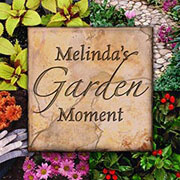
Melinda's Garden Moment Radio Tips

Melinda Myers
Nationally known gardening expert, TV/Radio host, author & columnist with over 30 years of horticulture experience and tons of gardening information to share! www.melindamyers.comMelinda's Garden Moment videos will help you create that beautiful landscape you’ve always wanted. Each week throughout the growing season, a new gardening video will be added right here, so be sure to stop back. You can also watch Melinda’s Garden Moments on your local network TV station affiliate.
Don’t panic if your red cedar, a type of juniper, looks like it has been slimed. The gelatinous orange substance is the fruiting stage of cedar–apple rust.
This fungal disease spends half of its life on Junipers, often called red cedars, and the remainder on apples, crabapples, hawthorns or quince. It does not kill either host, but can cause some tip dieback and round ball-like galls on the twigs and needles of junipers. These galls swell after a warm spring rain and produce the orange gelatinous horns. These horns release fungal spores, infecting nearby apples, crabapples, hawthorns and quince.
If infected, these plants develop orange spots on their leaves and fruit and in severe infestations may drop some of their leaves.
Fortunately, this is more of a cosmetic problem and the plants will survive.
A bit more information: Removing the alternate hosts within at least several hundred feet of your desired plant can help reduce the problem. Unfortunately, the alternate host may be on your neighbor’s property or a nearby park or public right-of-way. Avoid creating more problems in the future by buying rust-resistant varieties.